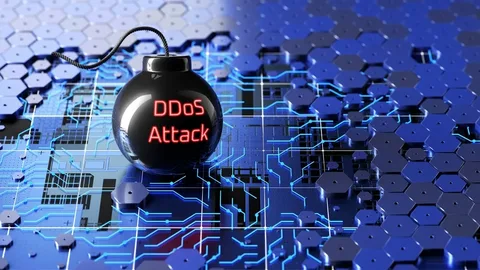Introduction
The rise of decentralized exchanges (DEXs) has been a transformative force in the world of cryptocurrency trading, enabling peer-to-peer transactions without intermediaries. One of the most prominent blockchain networks supporting decentralized trading is the XRP Ledger (XRPL), which has made waves due to its fast transaction times and low fees. However, with the growth of DEX platforms on XRPL comes an ever-increasing threat: Distributed Denial of Service (DDoS) attacks.
DDoS attacks pose a significant risk to the operational integrity of decentralized exchanges, as they can overwhelm systems, leading to slowdowns or even complete shutdowns. Given that XRPL DEXs serve as vital hubs for trading, ensuring resilience against these cyber threats is critical.
This blog post explores the Top XRPL DEX Solutions and their Strategies for Defending Against DDoS Attacks, highlighting the best practices and technologies these platforms use to protect themselves and their users.

What Are DDoS Attacks and Why Are They a Threat to XRPL DEXs?
Before diving into the specific strategies for defending against DDoS attacks, it’s crucial to understand what these attacks entail and why they are so damaging to decentralized platforms.
A DDoS attack occurs when a malicious actor floods a network or server with an overwhelming amount of traffic, preventing legitimate users from accessing services. In the context of XRPL DEX solutions, such attacks can be disastrous, leading to:
- Service Disruptions: Traders rely on the 24/7 availability of DEXs for their transactions. A DDoS attack can cause downtime, preventing users from executing trades, which can lead to financial losses.
- Market Manipulation: By disrupting trading activities, attackers can create artificial liquidity crises or manipulate prices, undermining the integrity of the market.
- Reputational Damage: If a DEX is frequently under attack or unable to provide reliable services, users may lose trust and move to other platforms.
Given the critical role of DEX platforms in the XRPL ecosystem, mitigating the risks posed by DDoS attacks has become a priority. Below, we explore the top DEX platforms on XRPL and their strategies to counter these cyber threats.
1. XRPL DEX Solution 1: Platform Overview and DDoS Defense Strategy
The first DEX solution we’ll explore is one of the pioneers on the XRP Ledger. This platform has built a reputation for its robust infrastructure and user-friendly interface. As with any large-scale DEX, it is constantly exposed to potential cyber threats, particularly DDoS attacks. Its strategy for defending against these attacks revolves around a combination of proactive monitoring and network hardening.
Key Defense Strategies:
- Traffic Filtering: By implementing sophisticated filtering systems, this platform can detect abnormal traffic patterns and differentiate legitimate users from malicious actors.
- Load Balancing: This DEX employs advanced load balancing to distribute traffic across multiple servers, ensuring that no single node is overwhelmed by requests.
- Rate Limiting: To prevent DDoS attacks from flooding their servers, the platform has set up rate-limiting protocols. This ensures that no single user or IP address can send an excessive number of requests in a short time frame.
These measures ensure that the platform remains functional even in the face of high-volume attacks, protecting both its infrastructure and its users.
2. XRPL DEX Solution 2: Platform Overview and Innovative DDoS Defense Tactics
The second DEX solution on XRPL is known for its innovation, particularly when it comes to security. Understanding the growing sophistication of cyber threats, this platform has taken an innovative approach to DDoS defense, integrating cutting-edge technology with a multi-layered security strategy.
Innovative Strategies:
- AI-Driven Intrusion Detection: By leveraging artificial intelligence, this DEX monitors network traffic in real-time, using machine learning to identify potential threats before they escalate into full-blown DDoS attacks.
- Decentralized Architecture: Instead of relying on centralized servers, this platform uses a fully decentralized node structure. This makes it much harder for attackers to target a single point of failure.
- Blockchain-Based Shielding: As a unique twist, the platform uses a blockchain-based verification system to ensure that only verified transactions are processed, minimizing the risk of fraudulent activity and malicious traffic.
The adoption of AI and decentralized technologies ensures that this platform stays one step ahead of attackers, continuously evolving its defenses to keep users safe.
3. XRPL DEX Solution 3: A Case Study in Effective DDoS Mitigation
Another top XRPL DEX solution stands out due to its transparency in handling DDoS attacks. In a recent incident, this platform faced a coordinated attack that lasted several hours. However, through quick action and a well-coordinated defense strategy, the platform was able to minimize downtime and protect user funds.
Case Study Breakdown:
- Early Detection: The platform’s monitoring system detected the DDoS attack within minutes of it starting. By identifying the unusual traffic spike early on, the team was able to activate their defense mechanisms.
- Elastic Scaling: One of the most effective strategies used during the attack was elastic scaling. This technology allowed the platform to dynamically allocate resources based on demand, ensuring that even as traffic surged, the platform remained operational.
- Collaboration with Network Providers: In addition to its in-house measures, the platform collaborated with external network providers to block the malicious traffic at a higher level, effectively cutting off the attack at its source.
This case study highlights the importance of both proactive and reactive strategies in defending against DDoS attacks. The ability to respond quickly and scale resources dynamically ensured that this platform could maintain its services during a critical time.
4. XRPL DEX Solution 4: The Role of Community-Driven Security
The final DEX solution we will explore takes a unique approach to DDoS defense by engaging its community. Recognizing the strength of decentralized platforms lies in their user base, this DEX has implemented a community-driven security model that helps identify and mitigate potential attacks before they cause significant harm.
Community-Driven Defense Strategies:
- Decentralized Reporting: Users of the platform are encouraged to report any unusual activity or performance issues. By decentralizing the reporting process, the platform can gather intelligence from a wide range of sources, identifying potential threats faster.
- Crowdsourced DDoS Mitigation: In a truly innovative move, the platform rewards users who contribute to DDoS defense by participating in testing, reporting, and even helping identify vulnerabilities.
- Educational Initiatives: The platform regularly educates its community on best practices for cybersecurity, ensuring that users themselves are an active part of the defense strategy.
By empowering its community, this XRPL DEX has built a robust defense network that extends beyond its own infrastructure, creating a distributed and highly effective barrier against DDoS attacks.
Conclusion
As decentralized exchanges continue to grow in popularity on the XRPL, ensuring resilience against DDoS attacks has become more important than ever. From proactive monitoring to AI-driven detection and community-driven defense, the top XRPL DEX solutions have adopted a range of strategies to protect their platforms and users.
While no system is entirely immune to attacks, these platforms have shown that with the right strategies for defending against DDoS attacks, they can minimize the risk of disruption and maintain the integrity of their services.
We hope this blog has provided valuable insights into the world of XRPL DEX platforms and their approach to cybersecurity. What do you think about these defense strategies? Have you encountered DDoS issues in your own crypto journey? Share your thoughts in the comments below!






